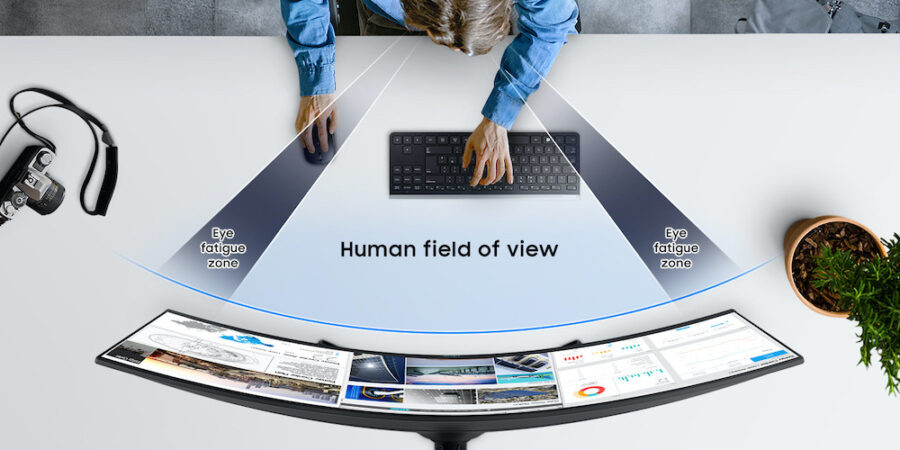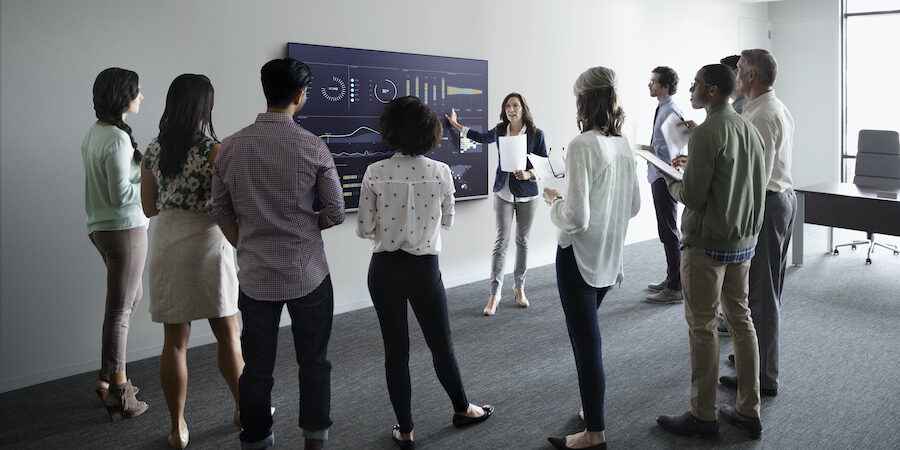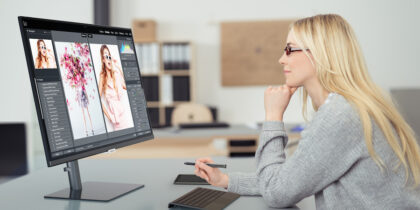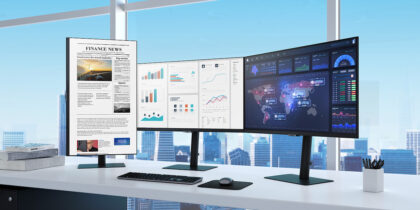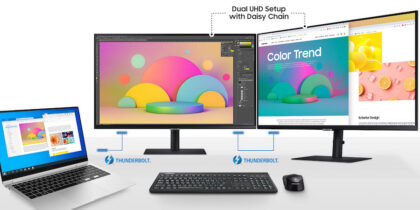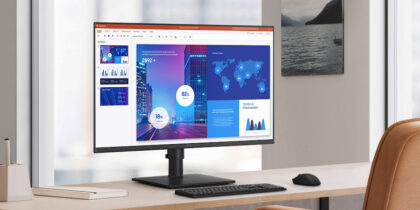Staring at a screen for hours on end is a requirement of many of today’s professions — but it can also cause health problems from eye strain and headaches to neuromuscular issues. Fortunately, new desktop monitor designs, such as ultrawide and curved displays, are making in-office and home workstations more ergonomic and comfortable. Samsung has led the market for these curved monitors since debuting a line of curved displays more than five years ago.
At first glance, these monitors might seem gimmicky in the workplace, better suited for hardcore gamers. But curved monitors are good for work of all sorts.
Do curved monitors reduce eye strain?
By replicating the curvature of the human eye, curved widescreen monitors mimic our natural field of view. Comparing a curved monitor versus a flat monitor, many research studies have found that a curved monitor is far more ergonomically friendly than a flat widescreen monitor or multiple flat monitors tiled together.
Reimagine your offices for the hybrid workforce
Walk through the market drivers, societal shifts and technologies of the reimagined office in this free guide. Download Now
On a flat monitor, the center of the screen is closer to the viewer’s eyes than the edges of the screen, so as the viewer scans their desktop, their eyes have to work harder to focus and refocus. As eye strain continues day after day, this strain develops into fatigue. And the problem is even more pronounced on wider screens.
By comparison, a curved monitor reduces eye strain by allowing the user to see everything on their monitor from roughly the same focal distance. Seeing the edges of the screen in their peripheral vision, users are more immersed.
Monitor curves have numbered technical ratings, such as 1500R, the R standing for radius. The smaller the R value, the deeper the monitor’s curve. With new engineering advancements, designers are pushing the R value down to 1000R in a new line of Samsung curved widescreen displays. At 1000R, a curved screen is an even closer fit to the human field of view. Samsung currently offers curved monitors with 1800R and 1500R ratings.
Easier on the body
Having a comfortable workstation monitor setup is critical to minimizing the risk of work-related musculoskeletal injuries. A curved monitor is better for your eyes and can even help prevent repetitive stress injuries while increasing efficiency, no matter the industry.
Effective monitors are also adjustable — with height, tilt and swivel capabilities — so users can optimize their personal setup, matching the screen to their natural line of sight.
Injury prevention advisory firm ErgoPlus says “the monitor should be placed directly in front of you, with the top no higher than eye level,” and “the keyboard should be directly in front of the monitor so you don’t have to frequently turn your head and neck.”
Spin-off benefits
Few jobs involve working on a single task in a single app all day, every day. Most jobs require multitasking, with multiple windows open on screen at any given time.
With a widescreen monitor, busy multitaskers view their word processing, email, collaboration and social media windows all at once — no minimizing or tab-closing necessary.
Some specialized jobs like creative production and project management also reap huge benefits from curved widescreen displays such as Samsung’s S95UA monitor that allow for a full view of large timelines in high resolution, without needing to use the scroll bar.
Adopting a wider view
Whether they’re curved or not, widescreen monitors increase productivity in the office and working from home.
But for power users immersed in on-screen tasks for hours each day, a curved display makes the work easier on their eyes and their body. And with greater comfort comes greater productivity.
Find the best desktop monitor for your workstation and your physical health with this interactive assessment, which can help narrow the decision-making process. Or explore the full lineup of Samsung’s desktop monitors for business, designed for high performance, comfort and versatility.
